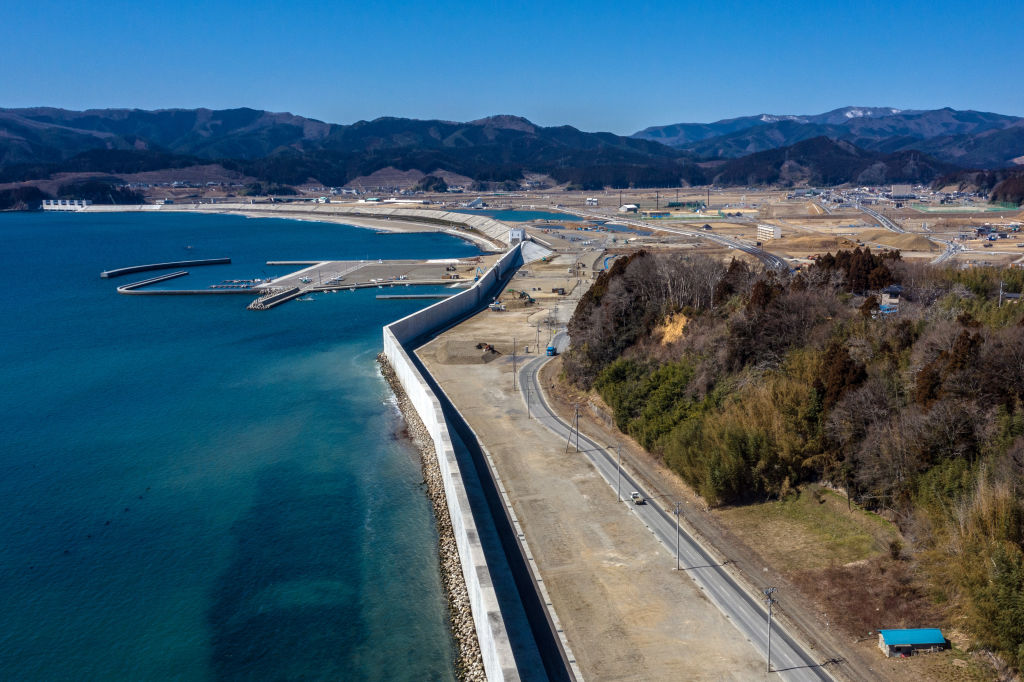Japan will today begin releasing tritium-laced water from the Fukushima No.1 nuclear power plant into the ocean (weather permitting). Japan’s prime minister Fumio Kishida made the announcement on Tuesday after a meeting with relevant ministers. The Japanese government has stressed the necessity of the plan and its safety, but it has nonetheless escalated an international conflict over the issue. China has responded by imposing an immediate ban on all Japanese seafood imports.
The discharge has been sanctioned by a report from the International Atomic Energy Agency. It is part of a long-term decommissioning plan for the plant that suffered major damage from the March 2011 earthquake. Tritium is not damaging to the environment if kept within regulatory levels, or to people unless it enters the body in high concentrations. The government says the water being released contains one fourteenth of the acceptable standard. The discharge will be gradual, with the 1.34 million tons (500 Olympic swimming pools’ worth) of stored water slowly released through an underground tunnel. Safety tests will be carried out immediately and the results released within a week.
None of this has reassured the Chinese. In a statement on Tuesday Foreign Ministry spokesman Wang Wenbin called the move ‘extremely selfish’ and demanded Japan find another way to discharge the water. China had maintained a ban on imports from Fukushima and nine other prefectures, and announced last month blanket radiation testing on all seafood products from Japan. Now there is a complete ban ‘effective immediately’. It is not alone: South Korea is maintaining a ban on products from around the Fukushima area despite the president Yoon Suk-yeol accepting the IAEA’s report.
It is hard not to suspect politics at work here. China’s relations with Japan have been at a low ebb for a considerable time, with recent moves by Fumio Kishida’s government towards a closer relationship with America, and some bullish comments on Taiwan further inflaming tensions. China’s stance is also undermined by reports that it has been releasing tritium into the sea for decades at higher concentrations than Fukushima.
As for South Korea, despite a slight mellowing since Suk-yeol took over, relations remain cool. Seoul’s ambiguous position seems designed to pander to public opinion (officially the government accept the discharge is safe but saying so would be unpopular).
Added to this, as well as being useful diplomatic weapons, import bans are also rather useful for protecting the local market. Japan has no option of a tit for tat response.
The biggest losers in all this are the farmers and fishermen. Ever since 2011 a seemingly indelible stigma has been attached to Fukushima, with even car number plates having to be removed from those fleeing the area for fear of harsh treatment. Production values of seafood from the area have halved since 2010.
In response the government announced two assistance funds worth a total of 80 billion yen (around £430 million) to help ameliorate the lingering reputational damage. Kishida will also demand that other countries lift their import bans and promote understanding through the swift release of safety data. Expect similar stunts to that of former agriculture minister John Gummer, who fed his four-year-old daughter a burger to allay fears over the safety of British beef at the height of the BSE scare.
It is unlikely to be enough. The international market looks likely to be severely reduced for the immediate future. China has taken such a hard line – the Global Times even warned of a ‘real life Godzilla’ emerging from the contaminated waters – that it is hard to see how it could back down.
All of this has fed into the almost neurotic safetyism of the Japanese people
Domestically, things also look bleak. All the available information points to the produce from the region being safe, but that is unlikely to convince the Japanese. People mistrust the government and the owners of the plant TEPCO: with some justification. The authorities hardly covered themselves in glory during the emergency and its aftermath with basic errors, such as misinforming the public about radiation levels, while TEPCO saw their reputation largely trashed as the company struggled to understand the situation. At one point the Tokyo HQ ordered the pumping of seawater into the plant to be stopped, which could have been disastrous. It took the expertise and bravery of one manager, Masao Yoshida, to disregard his superior’s commands and stabilise the situation.
More broadly, there is the deeply ingrained, visceral negative reaction to anything connected to nuclear power (Oppenheimer still hasn’t been released here yet). This hasn’t facilitated a rational assessment of nuclear issues. There is, for example, a poor understanding of what happened in Fukushima in 2011. Nobody died as a result of the release of nuclear material from the plant, nor have there been any cases of radiation sickness, but the impression that it was a real, rather than potential, catastrophe remains.
All of this has fed into the almost neurotic safetyism of the Japanese people, many of whom still wear face masks and refuse to travel, even domestically, despite negligible Covid figures, and seem beyond reassurance or persuasion. Fukushima looks set to be the pariah prefecture for some time to come.







Comments